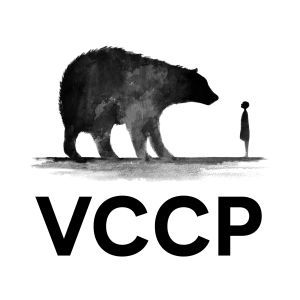
VCCP Unveils Year-Long Exploration of the Science of Memory

Less than 16% of ads are recalled and correctly attributed; and 1/3rd of online ads are never even seen. Calling out this ‘chronic wastage’, VCCP has today launched ’The Challenger Series’, a new thought leadership programme, which aims to tackle the industry’s biggest problems - starting with the ultimate driver of purchasing decisions at the point of sale: memory.
Its first report,‘Cracking the Memory Code’, looks at the science of memory and how marketers can ensure their brands are remembered, how to get their brand noticed in the first place and more importantly, how to ensure brands are recalled at the shelf, search engine and till. The report reveals how memories are formed, the levers of memory, and what this means for marketers looking to increase their share of mind.
Contrary to popular belief, memory is not a storage system, it’s a filtration system - we are built to forget, not to remember. However, once memories are encoded they can be recalled for up to a lifetime and become habitually accessed with the right triggers. Although they may not realise it, marketers are relying on neuroscience premises like the Hebbian Theory to form these habitual triggers between their brand and category.
There’s a common misconception that the more we like something, the more we remember it. In fact, it’s the exact opposite - the more we remember something, the more we like it. The best brands have become synonymous with their categories by using consistency and association. By using the three laws of memory which are shared in the report, marketers can crack the memory code and be recalled and remembered for up to a lifetime.
Charles Vallance, founding partner and chairman of VCCP, said, “The human brain is not designed to remember, it's designed to forget. The greatest brands understand this. They become Memory Makers by cracking the codes of memory, establishing a foothold of recall in the mind of their prospect. This is the most valuable real estate on earth, and this report shows how your brand can secure it through the full spectrum of the behavioural scientist's memory-making toolkit - including heuristics, engrams, distinctive brand assets, implicit memory codes, endowment and the Zeigarnik effect. Because it is binary, memory is fraught with jeopardy. This book teaches you how to stay on the right side of the divide. The side we'll remember.”
Cracking the Memory Code shows how a deeper understanding of the levers of memory helps to explain many of the rules of thumb of creativity - the power of emotions, how incomplete information can engage an audience, the role of surprise in intensifying emotion, humour’s ability to connect, and the influence of rhymes and rhythmic language. The report also explores how consumers are curious to discover new things, but also afraid of anything that’s too new - which is why it’s marketers’ duty to act as custodian of brands, nurturing brand platforms and brand worlds that allow them to innovate while staying the same.
Richard Harriford, global group planning director at VCCP and author of the report, added, “What’s on the other side of a penny? People see them all the time; few can remember.”
“Every piece of communication exists on a knife edge between being instantly forgotten and remembered forever. It throws down a gauntlet to everyone working in marketing communications: if we’re not interesting, they’re not listening, and our brands go missing.”
“In a time of lightweight assets and competition for attention, this report is a timely reminder of not just why people remember, but why it’s so fundamentally important that they do. All of us reading this have an incredible job - and responsibility - to create work that’s unmissable and impossible to forget. For anyone interested in doing that, the secret sauce of memory is now unveiled in this research and this report. It’s the difference between being unforgettable and the forgotten side of the penny.”
To put the approach into practice Cowry Consulting conducted an experiment featuring 100 ads, widely regarded as some of the industry’s best since the 1970s. The ads were tested by a nationally representative sample of participants using three scientific techniques for memory encoding, with the results underscoring the report’s findings on memorability.
The top 5th percentile across all categories included Cadbury’s Birthday, Cadbury’s Gorilla, Coca-Cola’s Holidays Are Coming, Haribo’s Boardroom and Specsavers’ Rollercoaster. This testing revealed that of the ads that scored in the highest 5%, four of the five ads were part of long-standing creative platforms - demonstrating the power of “compound creativity”.
Raphy March, MD of Cowry Consulting, said, “Understanding the intricacies of how memories are formed allows us to craft marketing strategies that not only capture attention but also endure in the minds of consumers. This method is a first for how we test ads. The research highlights the importance of consistency, emotional engagement, and creating distinctive brand worlds. By leveraging these insights, brands can significantly enhance their memorability and ensure their messages resonate long after the initial exposure.”
Later this year, VCCP and Cowry Consulting will launch its product Memory EQ which combines a series of tests to evaluate memorability for clients and ensure that no more money is wasted on assets that will neither be seen nor recalled.
To find out more about the science of memory and how marketers can hack the brain to encode their brands in people’s long term memory, download the full report now here.













